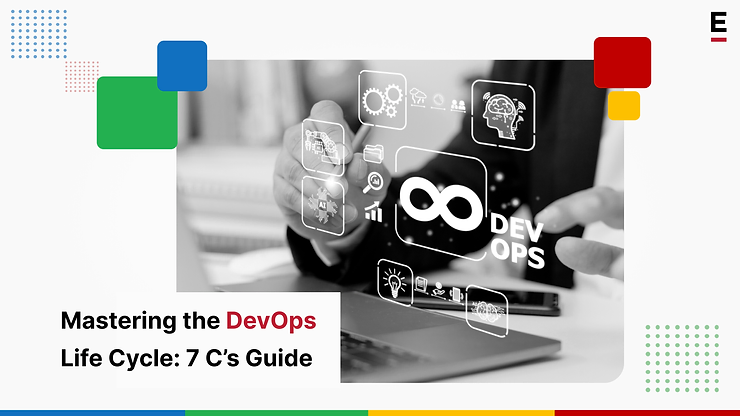Mastering the DevOps Life Cycle: 7 Cs Guide

To appreciate the significance of DevOps, let us first recap the challenges traditional software development models pose. Siloed teams, lengthy development cycles, and unstable environments were common obstacles that hindered organizations from achieving optimal efficiency. DevOps emerged as a philosophy to address these issues, focusing on continuous improvement and integration. By drawing inspiration from Agile methodologies and leveraging modern tools and practices, DevOps has become an indispensable asset for tech-forward organizations.
This participation in the DevOps philosophy epitomizes the breaking down silos, leading to faster decision-making and fluid workflows. A crucial aspect of the DevOps life cycle is the feedback loop, which ensures that teams remain responsive to changes and continuously improve their processes. The beauty of the DevOps life cycle is that it is not limited to seasoned developers alone; it serves as a treasure trove of knowledge for professionals in various functions within the IT environment. Whether you are a network engineer, a security analyst, a system administrator, or someone looking to enter the domain of DevOps, understanding the DevOps life cycle empowers you to contribute more effectively towards your goals.
The linchpin of consistent code integration into a shared repository is Continuous Integration. This stage involves automated building and preliminary testing, enabling the early detection and resolution of issues. Continuous Integration plays a vital role in maintaining code quality and ensuring the application is always in a deployable state.
It involves running automated tests to validate the functionality of the application. While testing may traditionally be associated with QA engineers, its value extends to other IT professionals as well. For instance, a security analyst can implement security tests to ensure the application is resilient against potential threats.
To proactively address any issues that may arise, Continuous Monitoring plays a crucial role. By closely monitoring performance metrics, log files, and user feedback, organizations can take swift action in response to emerging issues. For example, developers can utilize performance data to optimize their code, while security professionals can monitor for signs of a data breach and promptly mitigate it.
It should never be an afterthought. By integrating feedback into the development pipeline, organizations ensure that the product meets the needs and expectations of its users. For instance, an IT manager can analyze feedback to prioritize features or identify areas where staff training is required.
Automation plays a significant role in Continuous Deployment, where the application is deployed to the production environment after undergoing testing and validation. However, it is not solely about pushing code into production; it also involves ensuring that the infrastructure can effectively support the application’s requirements, optimizing it for performance.
This final stage involves managing and scaling resources, ensuring security compliance, and optimizing costs. During this phase, operations teams collaborate closely with development teams to maintain the application’s health. This includes ensuring adherence to regulatory standards and optimizing queries, as a database administrator might do. The DevOps life cycle encompasses a series of interconnected stages. From Continuous Development to Continuous Operations, each stage contributes to the seamless flow of software development, deployment, and maintenance, allowing organizations to deliver high-quality applications efficiently. By embracing the principles and practices of the DevOps life cycle, teams can work collaboratively, address challenges effectively, and achieve continuous improvement and innovation. In the next and final blog from this series, we will talk about the most important DevOps tools and technologies for software development. Stay tuned!
Read other Extentia Blog posts here!

